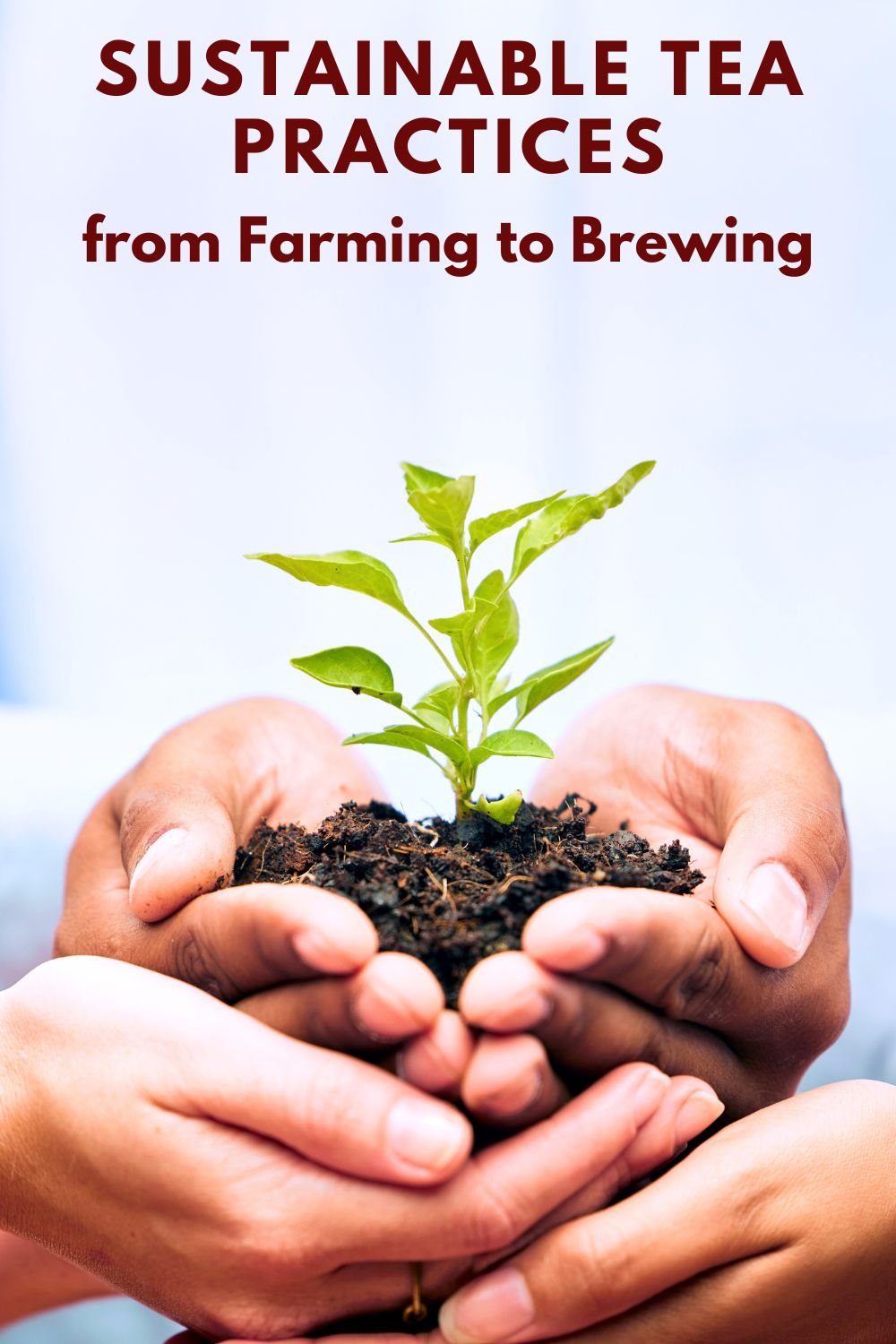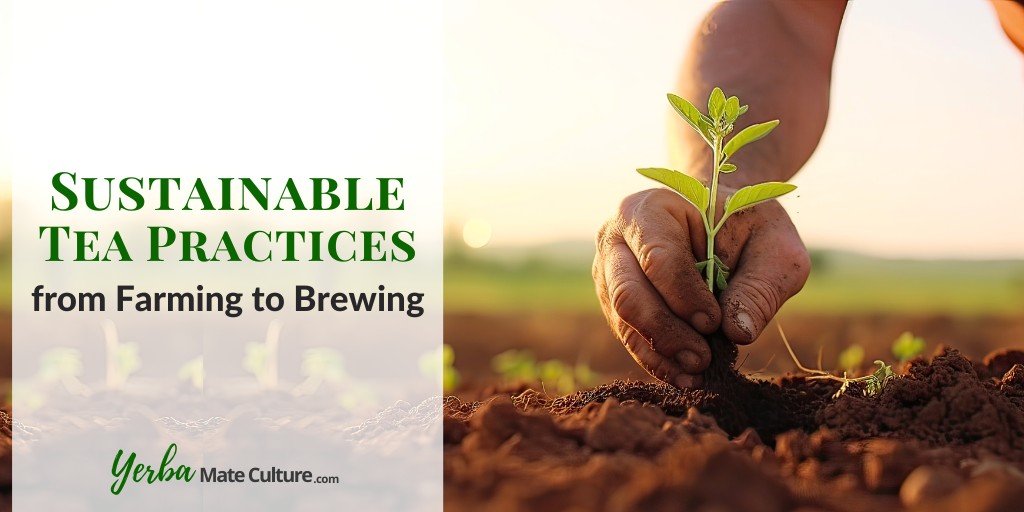Welcome to the greener side of the tea leaf! As we steep ourselves in the warm, comforting embrace of our favorite brews, it’s vital to ponder not just the flavor, but also the footprint of our tea consumption.
So let’s unravel the tangled tendrils of tea production that span from the lush fields where it’s cultivated to the cozy nooks of our kitchens where it’s sipped!
In this guide, we’ll explore the impact of tea farming from conventional to organic and discuss the significance of fair trade and ethical sourcing. I will also give tips on how you can be more eco-friendly when brewing tea at home.
We’ll even dip into the innovations stirring up the tea industry, from earth-friendly processing to packaging that promises more than just biodegradability.
Tea Farming
Tea farming, as practiced traditionally across vast landscapes in Asia and Africa, often leaves a significant environmental footprint. The use of synthetic pesticides and fertilizers in conventional tea plantations has led to soil degradation, water contamination, and a decrease in biodiversity.
Moreover, the social implications are equally pressing, with many workers facing harsh conditions and inadequate pay. Understanding these challenges is the first step towards cultivating a more sustainable approach to our beloved brew.
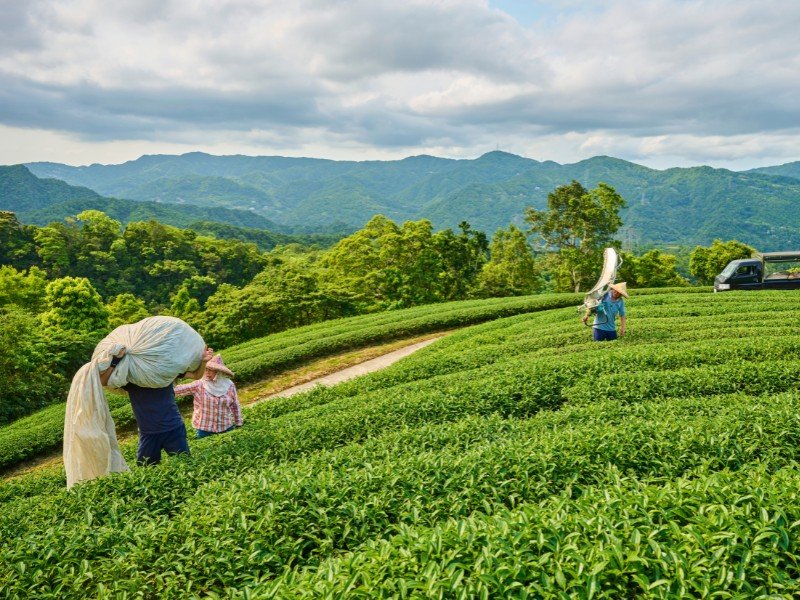
Organic Tea Cultivation
Enter the realm of organic tea cultivation, where the use of chemical additives is strictly off the menu. This practice adheres to stringent standards that ensure the soil is enriched naturally, pests are managed through eco-friendly means, and the ecosystem is preserved.
The benefits?
A healthier cuppa for you and a happier planet. Organic farming not only reduces pollutants in our waterways but also supports wildlife biodiversity, creating a harmonious environment for all creatures great and small.
Biodynamic Tea Farming
Biodynamic farming takes organic to a celestial level, integrating astrological influences and holistic practices.
This method treats the farm as a self-sustaining organism, emphasizing a spiritual and ecological approach to agriculture.
Biodynamic tea farms often utilize homeopathic preparations and follow an astronomical sowing and planting calendar. This esoteric yet scientifically backed practice results in vibrant, energetically charged tea leaves that reflect the health of their environment.
Water Management in Tea Production
Water management is a critical component of sustainable tea farming. Efficient practices like rainwater harvesting and drip irrigation are being implemented to minimize water wastage.
Proper water management not only conserves this precious resource but also ensures that tea plants are healthy and productive, which in turn can improve the quality and flavor of the tea.
Eco-Friendly Tea Brewing at Home
Brewing tea at home offers a delightful opportunity to embrace sustainability in our daily rituals. From the choice of leaves to the disposal of them, every step in the brewing process can be a testament to environmental consciousness.
Let’s explore how you can make your home tea brewing practice a beacon of sustainability!
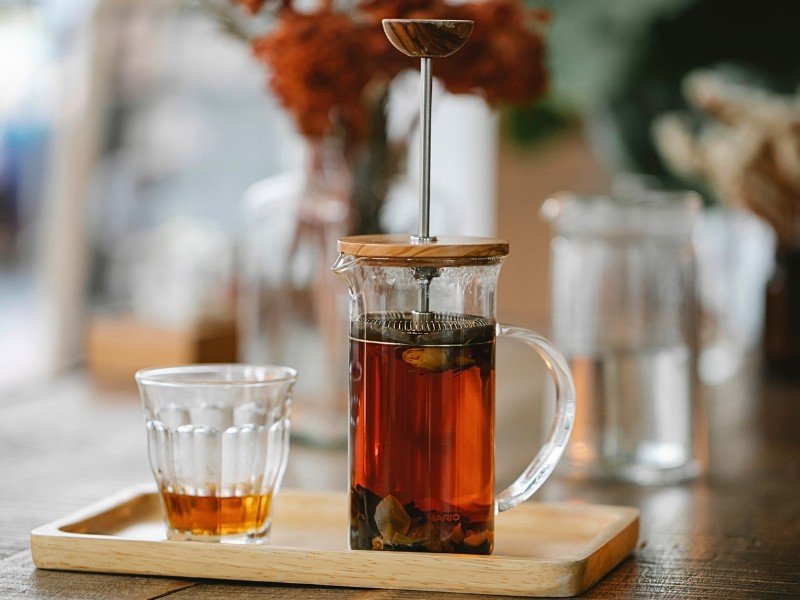
Choosing Sustainable Tea
Start with selecting sustainably sourced tea. Opt for loose leaf tea, which often comes with less packaging than tea bags, and look for organic or fair trade certifications.
These choices ensure that the tea is grown without harmful pesticides and that the workers involved in its production are treated fairly.
If you prefer using teabags, choose a plastic-free option.
Brewing Techniques
When brewing your tea, consider the energy used. Electric kettles are more energy-efficient than stovetop kettles because they automatically shut off when the water reaches the correct temperature.
Additionally, brewing only the amount of water you need can save energy and water — a small action that, over time, can make a significant impact.
Using Ingredients from Your Garden
For those with a garden, growing your own herbs for tea can be a rewarding and eco-friendly endeavor. Herbs like mint, chamomile, lavender, and lemon balm are easy to grow and can be used fresh or dried for tea.
Not only does this reduce the carbon footprint associated with transporting commercial tea, but it also ensures that you have fresh, pesticide-free ingredients at your fingertips.
Homemade Herbal Teas
Creating your own tea blends can be a delightful way to personalize your tea experience.
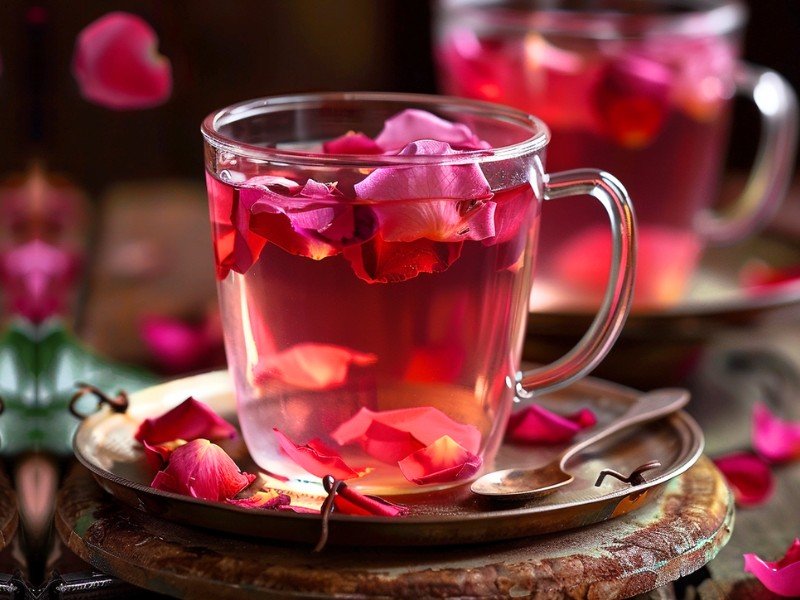
Here’s a simple guide to get you started:
- Harvesting: Collect leaves or flowers from your garden. Common herbs include mint, chamomile, or lemon verbena.
- Drying: Spread your harvest on a clean surface and let it dry in a cool, dark place. This can take a few days depending on the moisture content of the plant material. For a faster option, use a herb dehydrator.
- Storing: Once dried, store your herbs in airtight containers away from direct sunlight to preserve their flavor and medicinal properties.
- Brewing: Mix and match your dried herbs to create custom blends. Steep in hot water for about 5 to 7 minutes, then enjoy.
I recommend that you try these recipes:
Creative Uses for Used Tea Leaves
After brewing, used tea leaves still have much to offer.
Here are a few environmentally friendly uses:
- Composting: Tea leaves are rich in nutrients and can enhance compost. Add them directly to your compost bin as they decompose quickly and enrich the soil.
- Natural Cleaning Agent: Green tea leaves can be used to scrub dishes or clean mirrors; their slight abrasiveness helps in removing dirt without the use of harsh chemicals.
- Gardening: Used tea leaves can help retain moisture in soil. Sprinkle them around plants to lower the soil temperature and keep the roots moist longer.
- Odor Neutralizer: Dry used tea leaves and place them in a bowl in your refrigerator or on a counter to neutralize odors naturally.
By integrating these practices into your tea routine, you not only enhance your enjoyment of this ancient beverage but also contribute positively to the environment. Brewing tea at home with mindfulness toward sustainability allows us to savor the ritual while honoring the planet.
Sourcing and Packaging
Fair Trade and Ethical Sourcing
Fair Trade isn’t just a label; it’s a lifeline for many tea workers around the world. This certification ensures that farmers and laborers receive fair wages, work under safe conditions, and are given opportunities for community development and economic empowerment.
Ethical sourcing extends beyond fair wages, encompassing environmental protection, and the preservation of local communities. By choosing fair trade tea, consumers contribute to a market that values human dignity and ecological respect.
Innovations in Tea Processing and Packaging
Innovation is steeping throughout the tea industry, particularly in processing and packaging. Modern processing techniques that reduce energy consumption and water use are becoming more prevalent.
Meanwhile, packaging is shedding its old, wasteful skin. Biodegradable and compostable packaging materials are on the rise, with some brands even adopting zero-waste principles.
These advancements not only reduce landfill waste but also appeal to the eco-conscious consumer.
Future Trends in Sustainable Tea Production
The future of tea looks green, with sustainability at the forefront of production innovations.
Climate-smart agriculture, which anticipates the challenges posed by climate change, is set to play a significant role. Technologies like precision farming, which uses data to optimize growth and resource usage, are also expected to advance.
With these innovations, the tea industry is poised to not only survive but thrive in an environmentally conscious future.
Final Thoughts
Every tea drinker has the power to influence the industry. Consumer demand for sustainable and ethical products drives companies to adopt better practices.
By choosing organic, fair trade, or biodynamically grown tea, consumers send a clear message to the industry about their values. Furthermore, educating oneself about the origins of tea and the conditions under which it is produced can help in making informed choices that support sustainable practices.
As we’ve journeyed through the world of sustainable tea practices, it’s clear that every aspect from cultivation to consumption holds the potential for positive impact. The choices we make, no matter how small, contribute to a larger narrative of conservation and respect for our environment and its inhabitants.
So next time you sip your favorite tea, take pride in knowing that it could be a force for global change.
Additional Resources
For those inspired to dive deeper into the world of sustainable tea, numerous resources are available. Websites like the Ethical Tea Partnership provide information on sustainable practices in the tea industry, while organizations like Fair Trade USA offer insights into fair trade products.
Books like “The Story of Tea: A Cultural History and Drinking Guide” by Mary Lou Heiss and Robert J. Heiss can also provide further reading on the fascinating world of tea.
Through understanding, choosing wisely, and advocating for sustainable practices, we can all be part of a movement that ensures tea continues to be a source of pleasure and health for generations to come, without compromising the well-being of our planet.
